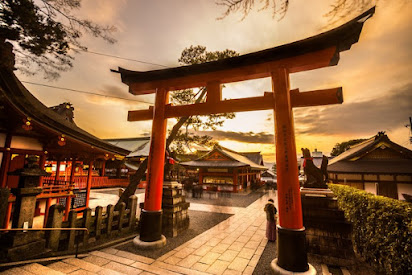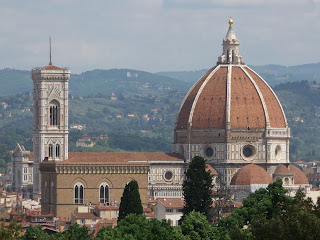World War I's Impact on the World of Art
I have decided to look at three pieces of work that were clearly influenced by the tragedy of World War I. These paintings shook me as I was looking for different pieces from the early modern era. It was heart-wrenching to think about what the artist must have been going through as the images were created. I would like to share my thoughts on the following pieces with whoever reads this post.
Artist: Paul Nash
Circa: 1919
Location: Buckinghamshire, England, United Kingdom
Image hosted by: https://en.wikipedia.org/
The first thing I could see in this picture was the trees. Shattered and destroyed stumps where tall leafy giants would have stood five years before this painting. As I take a step back I start to see further tales of death and destruction on this stretch of land. The bottom left shows the remains of a bombed-out building buried into the earth and an empty helmet floating on top of the water amidst pitted earth from recent shellings. People were running across the battlefield in an attempt to flee to safety or rejoin those that had left them behind. Even the rays of light in the background try to break onto the field only to fall back into the clouds as they touch the ground. I can feel my heart being squeezed as I look at this painting.
A Grave in a Trench
Artist: William Orpen
Circa: 1917
Location: Wsetern Front, Europe
Image hosted by: https://www.iwm.org.uk/
A Grave in the Trench is the next piece I will look at. As in the previous piece, we once again see the destruction that has taken place because of the war. However, in this piece, the focus isn't only on the destruction of the land. We also have a visual representation of people who had lost their lives on this very spot. A single cross stands in the center, surrounded by three unadorned markers sticking out of the ground. Although the people who lost their lives were fortunate to be given some small semblance of a resting place, we are shown that there wasn't enough time to allow for these individuals to be returned to their loved ones. Instead, their resting place will remain here, in some unknown patch of land, only remembered by those who laid them to rest. When I look at this piece, I am overwhelmed by the loneliness emanating from that idea.
While color is important in this piece, I believe form is the strongest factor displayed. If we were to take all of the colors out of this painting and remake it as a line drawing I would still get that same feeling of loneliness. That cross would still stand silently amongst the destruction and debris. However, that doesn't mean color and tone have no meaning. The cross itself stands in the middle of this trench and resides in the shadows cast by the wall. This helps drive the sadness these soldiers' deaths have brought to their companions. Then we have color to portray the state of decay the landscape has undergone. The patches of green that had probably flourished here are now reduced to a clump here and there.
Military Cemetery at Châlons-en-Champagne
Artist: Felix Vallotton
Circa: 1917
Location: Champagne or Argonne, France
Image hosted by: https://www.bl.uk/
For my final image, I have selected Military Cemetery at Châlons-en-Champagne. This piece also displays loss, but unlike the previous two paintings, its focus is the loss of human life instead of nature. The only display of nature here is a brief glimpse in the foreground, the grayed-out sky, and the small row of trees flanking the background. I love how this piece achieves the same loneliness as A Grave in a Trench with such a cluttered landscape.
This piece uses pattern and color magnificently here. The repeated crosses eventually blend into a sea of gray. We can no longer discern one cross from the next and the greens from the grass and bushes have been blotted out. I see another pattern in the only break of the monotone coloring with the ribbons and wreaths we can vaguely make out as our eyes sweep into the background. Then we have a silhouette of the bereaved visiting graves instead of a colored portrayal to add to the sense of sadness and loss.
Each of these paintings came into existence because of the destruction and death caused by World War I. These artists all witnessed the war from the front lines as official war artists. The thoughts, images, and emotions on display are from the first-hand experiences of these three men. They weren't sitting in a studio brainstorming or standing on a hill overlooking a tranquil landscape. Instead, they were constantly on the move watching the newly invented tools of war tear apart the homelands they loved and the companions they traveled with, never knowing if this day would be their last. Had they not been there to witness the carnage, I do not believe these paintings would speak to me on such an emotional level.
"Nash, Paul, 1889–1946 | Art UK". Artuk.Org, 2022, https://artuk.org/discover/artists/nash-paul-18891946.
"British Library". Bl.Uk, 2022, https://www.bl.uk/collection-items/military-cemetary-chalons-sur-marne.
"Sir William Orpen". Tate, 2022, https://www.tate.org.uk/art/artists/sir-william-orpen-1725.






The Menin Road, Artist: Paul Nash- The first painting you posted really captured my attention. The land is so barren. It reminds me of the pictures one sees after a CAT 5 tornado strips the land to the soil with only the stripped trunks of trees showing. The lights coming down almost look like searchlights. The artist did a good job of capturing the devastation. The items blown about the painting all have been broken down by war that none of the pieces quite stand out as belonging to anything.
ReplyDeleteA Grave in a Trench, Artist: William Orpen- It took me a bit to figure out what was going on in the second painting to match up to its name. The gun and hard hat left an impression on me that someone wouldn’t leave their gun behind but the actual grave didn't pop out at me so I had to search for it. There seems to be a touch of spring coming through with the yellow and green landscape under the snow.
Military Cemetery at Châlons-en-Champagne. Artist: Felix Vallotton-
I think the third painting was trying to capture the huge amount of loss.
All three of your selections all relate back to the First World War. I see all three of your pieces in informational text books or in museums.